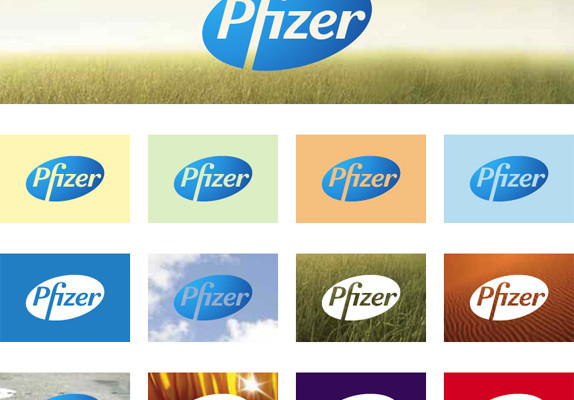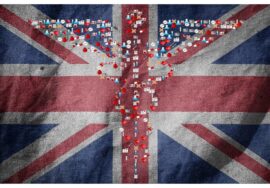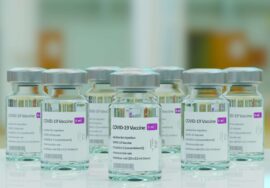
Pfizer: A History
Like most pharmaceutical companies established in the nineteenth century, Pfizer’s origins are as a fine chemicals company. Charles Pfizer and his cousin established “Charles Pfizer & Company, Manufacturing Chemists in New York in 1849 and by 1860 the company were making over a dozen chemicals for use in a range of industries including photography, food production as well as medicine. Opportunism, agility and a willingness to adapt to a changing world were key elements to the survival and development of Pfizer through the first 100 years. Whilst the company continued to be primarily a chemicals company up until the second world war, a number of developments brought Pfizer into the world of medicines in the early years.
The firm’s first important product was in the medical arena- in fact these days it would probably be categorised as a functional food! Intestinal worms were common in the US at the time and Charles Pfizer and his cousin Charles Erhart, combined their respective knowledge of chemicals and confectionery to produce a sweet toffee containing the anti-worming agent santonin.
Opportunity to expand the medical side of their business was then again presented by the outbreak of the civil war, when Pfizer stepped up production of chemicals like tartaric acid, cream of tartar, iodine, morphine and chloroform.
Notwithstanding these significant forays into medicines, going into the 20th century Pfizer continued to be primarily a chemicals company and at the centre of the firm’s growth was citric acid. The booming soft drinks market in the US was key to the growing demand for citric acid, which was originally derived from citrus fruit imported from the likes of Italy. Protectionist practices, wars and poor harvests lead to frequent problems with supply and Pfizer responded by investing heavily in research and development to devise a way of manufacturing citric acid via fermentation of sugar (so called SUCIAC or Sugar Under Conversion into Citric Acid). By the 1920s Pfizer had refined the technique to such an extent that they no longer had to rely on the importation of lemons and limes and, in the process, had become global experts in the techniques of deep tank fermentation. Unwittingly, the company’s willingness to innovate in this area laid the foundations for their survival and continued success as a drug company as the 20th century progressed, long after the citric acid market ceased to be an attractive opportunity.
Throughout this time Pfizer was a privately-owned company whose shares were in the hands of a limited number of individuals related to the company’s founders, Pfizer and Erhart. Decisions could be taken quickly and the company changed direction in fairly radical ways on a number of occasions to respond to the changing environment in which they operated. A prime example of this was in 1922 when they closed down their Borax manufacturing operation (foreseeing a decline in the use of the product as a food preservative) to make way for another SUCIAC plant for the, then, booming citric acid market. A second example of this agility came in September 1942 when Pfizer made the historic move into mass production of penicillin, heralding the start of their emergence as a pharmaceutical company.
Penicillin was discovered in 1928 but large-scale production had always been a problem. Pfizer were able to utilise the expertise in deep tank fermentation gained in the development of SUCIAC to devise a way of ‘mass fermenting’ penicillin. To aid the war effort, (at the expense of the profitable manufacture of citric acid) in 1942 the board decided to invest heavily in a New York-based deep tank fermentation facility for the production of penicillin bound for US troops in action in Europe and Asia. As with the decision to ramp up citric acid production, the decision to shift the course of the company towards antibiotic production was made by a small group of directors controlling the firm at that time. Focus on antibiotic production was in part for altruistic reasons, but it had a profound effect on the future direction of the corporation and marked the birth of Pfizer Pharmaceuticals.
As the ‘40s progressed, Pfizer focused its efforts on antibiotics research and development. In addition to penicillin, they increased production of a second antibiotics, streptomycin. However, a variety of other US companies that had been involved in the government-sponsored studies on streptomycin also produced the drug, which effectively immediately became a generic. Pfizer started looking for a new propriety drug and commenced a programme of soil-sample screening, looking for mould colonies with anti-bacterial properties. In late 1949, researchers discovered a substance that would come to be known as the antibiotic Terramycin. Remarkably, by today’s standard, the drug was patented and on the market by 1950!
This was another key turning point for Pfizer. For the first time, they owned all of the intellectual property associated with a powerful new antibiotic. They made the momentous decision to market the product under their own label and recruit a sales force to sell the product. This transformation into a fully-fledged pharmaceutical company threatened their old core chemicals business (which was a key supplier to pharma companies against whom they were now seeking to compete). However, this proved to be a far-sighted tactic as the continued survival of Pfizer has been down to repeated success in developing and marketing drugs, and not fine chemicals.
During the course of the 1950s Pfizer became a leader in the manufacture of vitamins; branched out into other therapeutic areas with launch of products like diabetes drug Diabinese; and continued research efforts to uncover new antibiotics. However, the company became embroiled in a number of long-running disputes with the US government- led by Senator Estes Kefauver- related to perceived price-gouging, patent infringement and potentially fatal side-effects related to Pfizer products (all issues that sound very familiar to us in the current era!) One of the outcomes of these “Kefavuver hearings” was the Kefauver-Harris Amendments to the US Food, Drug and Cosmetics Act which completely transformed the process for gaining FDA drug approval.
This was the beginnings of the long and expensive process for securing drug approval with which we are so familiar today. Then president of Pfizer John Mckeen, concerned about future costs associated with developing new drugs as well as the loss of patent protection time the long approval process would result in, decided that Pfizer’s continual survival required a programme of diversification to reduce the dependence on pharmaceuticals which had been the company’s focus for the previous decade. Between 1957 and 1962 Pfizer acquired nearly 30 different companies in sectors as diverse as packaging, paper, mining, food, textiles, oil and cosmetics.
During the course of the 1960s, despite some significant successes- mostly notably development of the polio vaccine- Pfizer’s research and development had become a little unfocused. In addition, the company’s overseas subsidiaries were poorly controlled and some directors thought that diversification away from the core pharmaceutical business was a mistake. In the early 1970s, Pfizer’s then, two, leaders Gerry Laubach and Ed Pratt, started a process of streamlining R&D operations and, momentously, decided to plough 15-20% of the company’s budget (as opposed to the previous 5%) back into research and development. The company was betting big as, by the 1970s, the time to approval with the FDA for a drug was more than 10 years.
The emphasis on R&D that began in the 1970s was central to the on-going success of Pfizer through the 1980s and 1990s. Development of the anti-inflammatory Felden (a key product for Pfizer in the 1980s) was mostly carried out in the 1970s. Zoloft, the landmark anti-depressant launched in 1992, began in discovery in 1972. Pfizer had laid out a long-term, albeit high risk, strategy for success and built on this in the early ‘80s by approving 20% annual increases in Central Research’s budget- a programme dubbed “Pfizer in the 1980s”. This was in part driven by concerns about a wave of patent expiries hitting older Pfizer products like Diabinese and Vibramyycin- another issue familiar to companies today! Adding to this issue of patent expiries were new regulations that made it easier for generics companies to enter the market via abbreviated new drug applications with the FDA.
As in the late 1950s, Pfizer’s response to concerns about the future profitability of the drug market in the 80s was to again look to diversification- this time into medical devices and diagnostics. A wave of acquisitions followed including Valleylab Inc and American Medical Systems. In addition, Pfizer still retained a chemicals business as well as investing in its animal health and consumer products divisions.
As Pfizer entered the 90s, the company started to benefit from the investment in R&D that had begun 20 years previously, with a string of blockbuster drugs launching in the early years of the decade. The new CEO, William C Steere Jr, seeing the success and profitability that investment in pharmaceuticals (R&D as well as sales and marketing) could bring, decided that this was where Pfizer’s future lay. Over the course of the 90s numerous companies unrelated to healthcare or unprofitable were sold off. By the end of the decade Pfizer was focusing exclusively on “medicines for people and animals” and investing heavily in R&D. Under Steere, the board concluded that the key to the company’s survival was to put more and more money into research for the future. In 1991 they invested $757million; this had increased to $2.8billion by the end of the decade.
By the turn of the millennium, the era of big pharma consolidation was well underway as firms tried to mitigate the increasing costs of bringing drugs to market. Pfizer, who had been bucking the industry trend of cutting sales teams by pouring money into sales and marketing (Steeres was a sales guy by training), embarked on a series of acquisitions on a course to becoming the world’s largest drug company. First was the hostile takeover of Warner-Lambert for $90.27billion, followed by the $60billion acquisition of Pharmacia, then topping out the decade with a $68 billion purchase of Wyeth. Given the chaos in the financial markets at the time, this last acquisition was a remarkable demonstration of how resilient the pharmaceutical industry can be to the effects of recession. There are very few other industries that could have witnessed a deal on this scale at the height of the financial crisis. (Pfizer also weathered the Great Depression better than most and was probably almost unique amongst US firms in avoiding staff lay-offs during the 1930s).
Pfizer’s run of acquisitions in the 2000s was also in part to limit the impact of forthcoming patent expiries which again were becoming a problem for the industry. Remarkably, in 2007, one quarter of Pfizer’s $48billion in revenues came from lipid-lowering blockbuster Lipitor- whose patent was set to expire in 2011. Going into the 2010s, with numerous other expiries in the offing and a pipeline looking bare by Pfizer’s historical standards, the company responding by making moves into generics themselves. In 2014 they acquired the generics company Innopharm whilst in 2015 they bought Hospira. Hospira, like Innopharm specialises in (more difficult to produce) injectable generics. In addition, the Hospira acquisition provided an important foothold in the newly emerging generics category of biosimilars.
Over the past 3-4 years, two subjects have dominated Pfizer’s thinking as the company considers its future:
One has been a desire to make a major non-US acquisition to enable a so-called tax inversion- relocating the company’s HQ outside of the US to avoid their 24% corporate tax. This was a large part of the motivation behind the thwarted attempt to take over the UK’s Astra Zeneca (2014) and Ireland’s Actavis (now Allergan) the following year. However, given that US President Trump is now making moves in congress to pass legislation that would lower America’s high corporate tax rate, tax-inversion plans will probably be shelved for the time being.
The other recent topic of discussion has been a proposed split, separating Pfizer into two distinct companies: one focusing on innovative new R&D-driven medicines and the other on established products, generics, biosimilars and foreign markets. However, these plans also seem to have now been put on ice, with current CEO Ian Reed commenting: “We believe that by operating two separate and autonomous units within Pfizer we are already accessing many of the potential benefits of a split”
The latest development is a proposed sell-off of the company’s consumer health division, signalling an increasing strategic focus on prescription drugs (both proprietary as well as generic) as the firm looks to the future.
Refs
Bull. Hist. Chem, VOLUME 25, Number 1 (2000)
“Charles Pfizer.” (2017) In Immigrant Entrepreneurship, Retrieved November 7, 2017, from Immigrant Entrepreneurship: http://www.immigrantentrepreneurship.org/entry.php?rec=31
J.L. Rodengen, the Legend of Pfizer, 1999
https://www.forbes.com/2002/07/15/0715pfe.html
https://www.ft.com/content/aaa1ee08-ad3d-11e4-a5c1-00144feab7de
https://www.ft.com/content/e8320ccc-0327-11e5-8333-00144feabdc0
https://www.pfizer.com/news/press-release/press-release-detail/pfizer_to_acquire_innopharma_inc
https://www.fiercebiotech.com/biotech/after-pfizer-buyout-vcs-back-team-55m-for-next-specialty-pharma
https://www.ft.com/content/376bf7e2-60b9-3845-a5b6-266a743a5c9b
https://www.bloomberg.com/news/articles/2017-10-10/pfizer-considers-strategic-options-for-consumer-health-business








